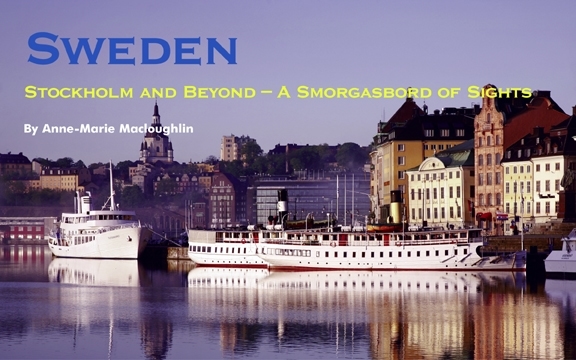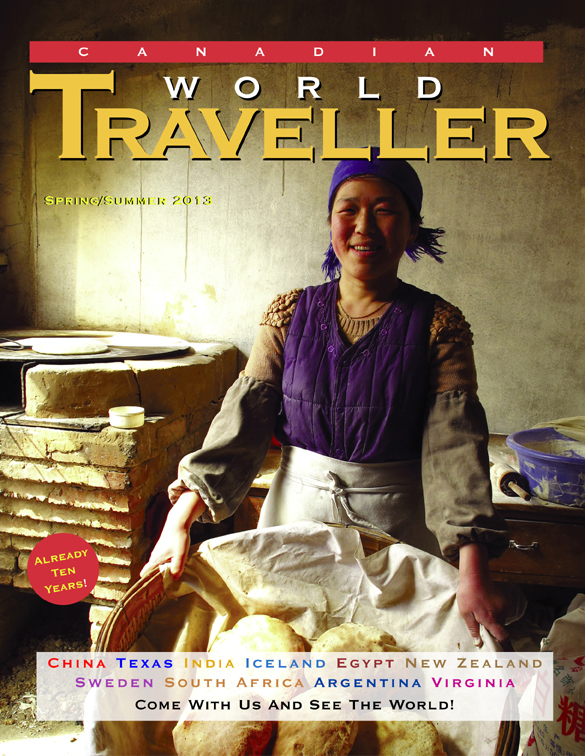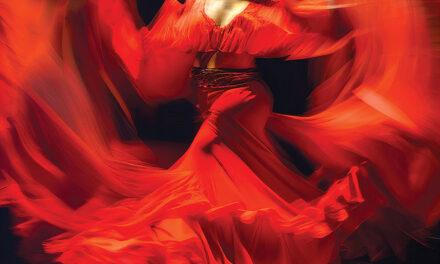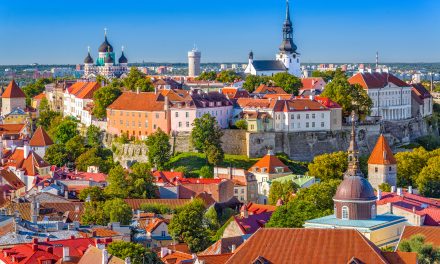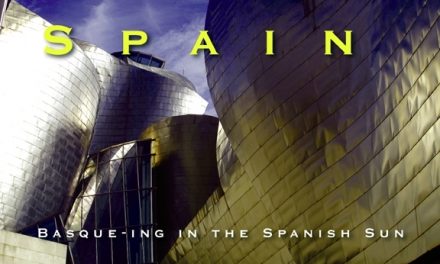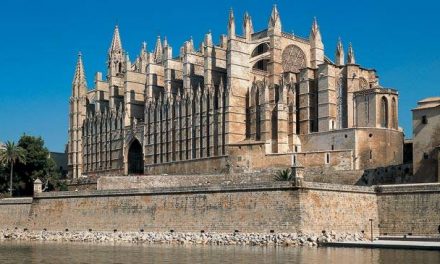Sweden
Stockholm and Beyond – A Smorgasbord of Sights
Published in the Spring 2013 Issue of Canadian World Traveller
By Anne-Marie Macloughlin

From the cobbled streets of Stockholm’s Old Town to the cathedral spires of Uppsala, this dazzling Scandinavian country will steal your heart – even in winter.
Climate
While most Canadians are dreaming of sandy beaches and warm temperatures, it can also be just as invigorating to take a trip to another cool clime and soak up some rays of culture and history in lieu of slathering on the sunscreen.
Midsummer daylight hours can number more than 18, and less than 6 in the the depths of winter. The climate in march can be similar to that of Toronto, temperatures around freezing, with spring showing it’s face on random days, and flurries on others. Landing at Arlanda Airport, a short distance from Central Stockholm, I was greeted by a snowy landscape but (thankfully) no vicious wind chill. The bus takes approximately 30 minutes to the Central Station, the major hub for bus/train transfers and commuter trains.
Language
The vast majority of Swedes are multi-lingual. Fluent in English with barely an accent, they are sympathetic to baffled travellers attempting to navigate streets with hard to pronounce names, and only too happy to assist. For the adventurous, here are some basic phrases to get your teeth into:
Hello – Hej (‘Hey’)
Goodbye Hej da (‘hey dah’)
How are you? Hur mar du? (‘Hoor mor doo’)
Yes Ja (‘Yah’)
No Nej (‘Nay’)
Stockholm – The Jewel in the Crown
Stockholm is Sweden’s capital, located in the south-east part of the country, and is located on 14 islands in the Stockholm archipelago. Glittering waterways, soaring spires, parks and green spaces co-exist in aesthetic harmony with distinguished architecture, medieval streets and modern retailers. Culturally rich, historically significant and with a state of the art transit system, this Scandinavian treasure has much to offer.
The old town, or Gamla Stan, dates from the 11th century and is a photographer’s dream. Winding cobbled streets, hidden lanes and tall narrow buildings mark this part of town as a must-see for every traveller. Located on the original small islands of the city’s earliest settlements, it has kept its original medieval street layout and flavor, and deserves its reputation as one of the main tourist destinations.
Stores selling ceramic Viking figurines and plastic Viking helmets lay cheek by jowl with the artisan studios, such as Artgatan (info@artgatan.se). Reasonably-priced hand-crafted leather jewellery and a large variety of angelic-themed gifts provide unique options if it’s originality you seek.
Food and Drink
Like any major city, coffee shops have sprung up all over Stockholm, but for a truly alternative experience to the generic Espresso House (which is still far more glamorous than the North American chains), drop into the Art Café on Vasterlanggatan 60. Located in a cellar down some very dungeonesque stone steps, take a break from walking those (sometimes slippery) cobbled stones and enjoy what the Swedes refer to as fika (coffee and cake). Don’t miss the densely delicious coconut balls and robust coffee served in a tall glass. Check out the original artworks on the walls, and if the timing is right, sit on a multi-cultural language class.
As a result of strict liquor laws in Sweden, it is worth noting that any alcoholic product above 3.5% is only available at Systembolaget, the government-owned chain of liquor stores (although grocery stores sell lower-alcohol beer and cider-type beverages).The legal age to purchase liquor is 20, 18 to drink it in bars and restaurants. Opening hours are usually until 7 on weekdays, 3 on Saturday, closed Sundays. Anyone who looks younger than 25 could be asked for I.D., so be prepared.
When I asked some locals what counted as traditional Swedish fare, ‘Meatballs’ was the most frequent response, and anything with loganberries. Of course, when in Sweden, one has to experience the famous smorgasbord. From the Swedish word Smorgas (open-faced sandwich) and bord (table), it’s essentially a buffet. As in North America, Asian-style buffets are popular destinations, with Pong (pongasian.se) a favourite with locals and a stone’s throw from the bustle of Drottninggatan. Most coffee shops have a good selection of sandwiches and salads, with vegetarian choices available in most establishments.
Architecture
Photo opportunities abound in Stockholm. The Royal Palace, Kungliga Slottet, is the official residence and major royal palace of the Swedish Monarch, King Carl XVI Gustaf. Located on Stadsholmen (City Island), this stunning cream-coloured stone beauty is especially beautiful at sunset, photographed from the Riksbron (National or State) Bridge, which crosses the Norrstrom River and it’s mini rapids.
For culture vultures, the Royal Swedish Opera House, located on the north side of the Norrstrom River and connected to the Royal Palace through the Norrbro Bridge, is what one would expect from a distinguished European Opera company. The original building, dating from 1775, was later demolished in 1892 to give way to the present building, a neo-classical beauty simply referred to as ‘Operan’ (The Opera), written in gold letters over an imposing exterior archway. The Royal Family of King Carl XVI Gustaf has a permanently-reserved Royal Box, perhaps as a nod to their ancestor King Gustav III, a great patron of the arts and the man responsible for the original construction.
Shopping Around
Like most major cities, Stockholm has its major shopping hub, and in this case the serious shoppers should seek out Drottninggatan (Queen Street). Marked by stone lions, it stretches from the Riksbron Bridge in the Norrmalm District, as far as Observatorilunden in Vasastaden, it is a pedestrianized plethora of boutiques, souvenir shops and of course, H&M. North American visitors should be aware of the shorter retail hours than we are accustomed to; most stores open at 10am and close up at 6pm, later on Thursdays and Fridays. Sweet-toothed folk should definitely schedule a visit to Karamellafar, a sugary paradise and the perfect spot to find typical Swedish candies and delicacies such as dark chocolate bars made with sparkling wine and speckled with gold leaf.
Fans of the vintage experience should make a point of seeking out Beyond Retro (beyondretro.com), a well-organized Aladdin’s cave of men’s and women’s clothing, shoes and accessories. Price range is higher than a thrift store and could be compared to one of the more upmarket emporiums to be found, for example, on Toronto’s Queen Street West strip. That said, the garments are in great shape, which might explain the absence of the musty odour that often accompanies similar stores.
The aforementioned Swedish giant H&M has a huge presence in Stockholm, with a huge selection that is reasonably-priced. The merchandise varies slightly from country to country, as was explained to me by an assistant (perfectly fluent in English, of course), so if you’re looking for some cheap and cheerful Swedish fashion you may not see back home, you won’t have to look far to find a branch of the famous fashion retailer.
Looking for more exclusivity? Then head to Ahlens (ahlens.se), Sweden’s largest chain of department stores. Sumptuous fashions, a large cosmetic and fragrance department, homeware and electronics, and the Hemkop grocery store located in the basement. Back in 2010, Ahlens garnered attention for using ‘real’-sized mannequins in their displays, eliciting a positive response by a clientele tired of the unrealistic body images portrayed by the fashion industry. This controversy recently sparked up again on social networking sites and has been a point of discussion on the internet.
On bad-weather days, hunker down in the Gallerian Mall, Stockholm’s first and largest Galleria. Over 80 stores under one roof, with cafes, restaurants and coffee shops to suit all tastes. There’s also a Tourist Information Centre, and free internet and WiFi.
Local Colour
Like many big cities, Stockholm has it’s market, conveniently located in the centre of Hotorget, or Hay Square, on the corner of Kungsgatan and Sveavag. Once the city’s actual Hay Market, weekdays you can find an appealing array of fruits, flower and vegetable produce. Sunday it morphs into a flea market where canny shoppers may be lucky enough to score some vintage vinyl from one of the many vendors. Hotorget is also home to the Konserthuset (concert hall), the PUB department store, and multi-screen movie theatre.
Museums
With an overwhelming number of choices ( http://www.stockholmmuseum.com/museums/) , I decided to ask for local opinion. One name that kept coming up was the Vasamuseet (vasamuseet.se), which frustratingly, was closed for renovations until May 1st 2013. Second choice was the Nobel Museum in Gamla Stan (nobelmuseum.se), named for Alfred Nobel, creator of the eponymous prize and the inventor of dynamite.
In 1888 Nobel’s brother Ludwig died while in Cannes, and the French newspapers mistakenly published Alfred’s obituary. The headline ‘Le marchand de la mort est mort’ (The merchant of death is dead, a reference to the destructive aspects of his invention), gave Nobel pause for thought as to his legacy. In 1895, he signed his last will and testament, setting aside the bulk of his estate to establish the Nobel Prizes.
Day Tripping
71 km north of Stockholm lies the city of Uppsala, the fourth largest in Sweden, and a record-breaker. Home to Uppsala University, founded in 1477 and the oldest centre of higher education in Scandinavia, this pretty town is in direct contrast to the cosmopolitan glamour of the Swedish capital, but with a reputation all its own. The cathedral, at 118.7m high, is the tallest church building in Scandinavia, dating back to the 13th century, and Uppsala University Library is the largest in Sweden, home to the Codex Argenteus, or Silver Bible, a 6th century manuscript containing a 4th century translation of the bible into the Gothic language.
No European trip would be complete without a castle, and Uppsala’s is a Disney-worthy vision, perched at the top of the city, turrets glowing pink in the sunset, complete with romantic views, such as the Botanical Gardens. Home to the governor of Uppsala, the former Hall of State can be rented for private functions such as conventions, banquets and wedding receptions, and can accommodate up to 550 guests. Next best thing to a Royal Wedding itself!
In spite of it being barely on the cusp of Spring, chilly days making it a challenge to hold a camera steady and enjoy the outdoors as much as one would wish, I don’t regret choosing a Scandinavian Winter odyssey over a more Snowbird-friendly beach vacation. Friendly people, ancient history, glittering waterways all around, just firmed my resolve to return for the summer perspective. And longer days in which to do it.

